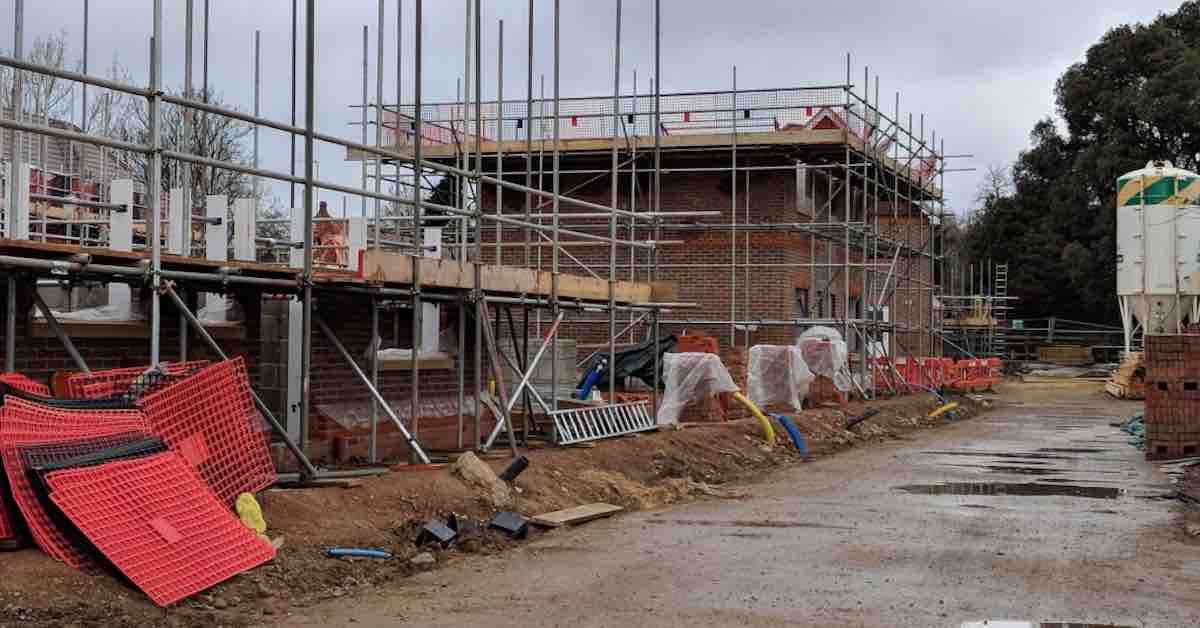The Government’s announcement that brownfield development will be supercharged under its latest shake-up of planning rules has prompted a mix of scepticism and support among UKPF sponsors and partners.
Some saw politics as the problem and there was a call for less talk and more action. Others welcomed Michael Gove’s announcement.
Mike Shearn, group investment & development director of Haslams Estate Agent, said: “It’s understandable for people to be more than a little sceptical about the Government’s reiterated pledge recently to ‘build the right homes in the right places’ and confirmation that ‘we are sticking to our plan and we are on track to meet our commitment to deliver the right mix of homes across England’.
“If this heralded plan is delivering against its objectives then why are we in the midst of such a deep-rooted housing crisis that is only getting worse? One can only conclude that either the plan is not working, it’s the wrong plan or most likely both!
“We need a plan that delivers the homes people need. The announcement about prioritising the development of brownfield sites has always been part of the solution for years and, in isolation, it’s a sticking plaster that may prove to be a distraction – possibly a useful one for the Government – that further delays much-needed wholesale changes to planning etc.
“Politicians of all persuasions need to face the facts, grasp the nettle and come together to depoliticise housing. They need to bang heads, agree a cross-party consensus on housing delivery, create a workable plan and then deliver it. Difficult and unpopular decisions will have to be made but that is what great political leaders do. Less talk, more action!”
Danielle Simpson, sales director of Pye Homes, said: “The decision to instruct local authorities to prioritise brownfield development is a pragmatic approach. Brownfield development presents a sustainable solution to address housing shortages while minimising environmental impact.
“By prioritising the redevelopment of underutilised or abandoned areas, we can revitalise communities, and make efficient use of existing infrastructure.
“However, it’s crucial that the Government provides adequate support and incentives to encourage investment in brownfield projects, such as streamlined planning processes and financial assistance.
“Additionally, there should be measures in place to address potential challenges such as contamination remediation and infrastructure upgrades. Overall, we believe that brownfield development offers great potential for meeting housing demands in a responsible and environmentally conscious manner.”
Ifti Maniar, planning director of WWA Studios, said: “Encouraging building on brownfield sites has been a longstanding feature of the planning system. This requirement has been present for decades, preceding the NPPF’s introduction in 2012; it was found in PPS3, and before that, in PPG3. Notably, this requirement is embedded as policy in most Local Plans.
“In 2017, the Government provided councils with new tools aimed at unlocking brownfield land for the construction of thousands of new homes. These tools included the establishment of ‘brownfield registers’ and the concept of ‘permission in principle’. However, the success of these initiatives has been limited. Brownfield sites present significant challenges of their own.
“From my perspective, while I appreciate the initiative, it appears that the Government’s recent re-emphasis on brownfield sites and the introduction of extended Permitted Development (PD) rights before the General Election may be more of an attempt to address surface-level issues than a genuine effort to resolve the underlying problems within the broken planning system.”
Andy Moffat, who leads the planning team at Savills in Cambridge, said: “The Government intends that the changes support residential delivery in a sustainable way through the conversion of previously developed buildings – often improving their energy performance – and in locations that can be highly accessible.
“The new flexibilities are likely to be welcomed by developers as they bring back into focus the ability for redundant and under-used commercial space to support the sustainable delivery of new homes – with the removal of both the requirement for a building to be vacant before a planning application can be made and the limit on the amount of floorspace that is permitted to be converted under an application.
“It is tried and tested that surplus office stock can make a valuable contribution to residential supply – a large proportion of which are found in sustainable town and city centre locations that have benefited from significant investment in infrastructure and contain extensive services and employment opportunities. Consequently, there is a strong land use planning case for alternative use provision in obsolete office stock.
“The delivery of new homes through the conversion of existing buildings also presents a good opportunity to minimise the pressure on natural resources and supports combatting climate change and reaching net zero targets. Permitted development rights are, therefore, certainly part of the solution, but we need a mix of housing types and tenures to get us to the Government’s 300,000 a year target.
“This, in partnership with the delivery of new homes on sustainable greenfield and brownfield sites through traditional planning routes, will provide the opportunity to help to deliver a number of new homes over the coming years.”
Karen Jones, planning partner at Blandy & Blandy, said: “These proposals seek views on measures labelled as ‘putting rocket boosters under brownfield regeneration’ and involve changes to the NPPF to give significant weight to the benefits of delivering as many homes as possible, especially where this involves land which is previously developed, and requiring the 20 most populous areas in England to apply a ‘presumption in favour of sustainable development in respect of previously developed land’.
‘A leading planning KC, Christopher Katkowski, recommended the presumption approach for underperforming London boroughs and the Government seeks to extend this further, stating it should not be constrained to London alone.
“The planning industry can at least be assured of a thoughtful and intelligent approach to the presumption proposals from a leading thinker well versed in the challenges of planning and deliverability. These are likely to be welcomed by developers seeking acceleration of the housing delivery process. The ultimate changes following consultation remain to be seen.”
Brian Dowling, partner at Boyes Turner, said: “There are some interesting changes to PD rights, and to home extensions, which will help smaller in-fill developers and retro-fitters. The brownfield policy probably doesn’t change much, as apparently 16 of the top 20 towns and cities are already meeting the Housing Delivery Test.
“And frankly, the brownfield sites that are economically viable to develop are probably under contract already.
“But one of the main ways that Government could help unlock the housing shortage is by imposing proper housing targets on the areas where people need to be based for the jobs and opportunities that actually exist. They could also update settlement boundaries that were set in the 1950s to reflect the population and needs of the 2020s.
“And the problem that the current Government appears to have is that those solutions are not politically acceptable to their core supporters.”
Grant Leggett, executive director of Boyer, said: “The Government is absolutely right to super-charge brownfield development – and not solely because it delivers on ministers’ political objective of resisting greenfield development. We need to develop on both green and brownfield land in order to meet the nation’s needs.
“Christopher Katkowski KC’s review of the London Plan is an excellent assessment of planning in London and is relevant to urban areas elsewhere in the country.
“The proposal that a presumption in favour of brownfield development should apply where housing delivery is below 95 per cent is an excellent recommendation, and not just for London.”
© Thames Tap (powered by ukpropertyforums.com).
Sign up to receive our weekly free journal, The Forum here.






































